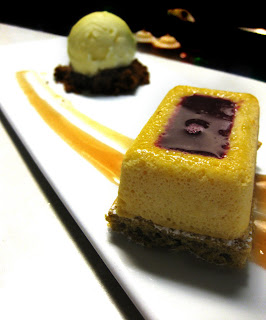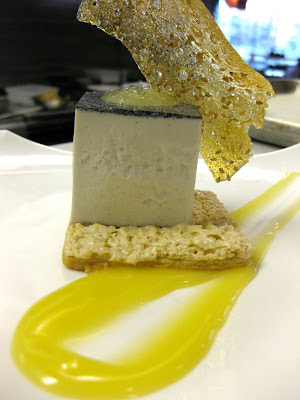Its official. My new site is up: Mcswiggenconfections.com

Interestingly enough, I tried importing this blog onto the site, in the interest of consolidation, but it doesn't sync up, and I'm not willing to keep up with two blogs, to I decided to just keep this one up.
All the chocolates I'm offering are surprisingly good. Even I'm satisfied with them, which is unusual indeed. I think there's something to the whole "practice makes perfect" thing.
I think that the chocolate that I'm proudest of, personally, is the Brown Butter truffle. What is brown butter? It’s a result of the Maillard reaction. Simply put, it’s the caramelization of the milk proteins due to heat. It’s the same idea as toasting bread, just a different protein that caramelizes. There's something about brown butter that makes everything better, whether sweet or savory. In the past few months I have played with incorporating brown butter into a couple different things. I started with a recipe that I saw in a magazine for brown butter sorbet. It was delicious, but even better as brown butter ice cream. I've also used it in my molten chocolate cakes, to great success.
About the same time that I was making my little brown butter discoveries, I was reading about caramelizing white chocolate. It’s a concept that has seemingly sprung up in the past few years simultaneously in a couple places. At D Bar, they had just introduced a pear dessert with a caramelized white chocolate mousse; Michael Laiskonis, on his blog, talked about the possibility of using it in a dessert as well. It’s pretty much the same idea as brown butter. If the chocolate gets too hot, the milk solids start to caramelize and color. This can happen accidentally just by having your water bath too hot, or intentionally by roasting the chocolate in a low oven. In my few experiments, I’ve decided that the slower you caramelize the milk solids, the smoother the end chocolate will be (the chocolate will begin to seize if roasted too hot or too long). I recommend keeping the oven at about 200° for about 2 hours, but it may take longer if you want the chocolate darker. In the end, you will have some beautiful golden white chocolate that tastes, unsurprisingly, a little like a deeper brown butter.

After that, it was just a matter of making a ganache and rolling them in milk chocolate. It’s amazing how much the Maillard reaction cuts the sweet taste and leaves a rounder, bolder flavor. Delicious.










